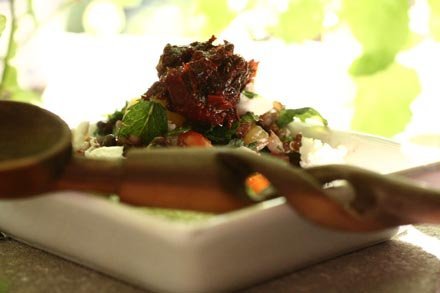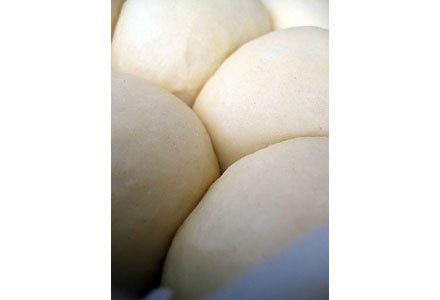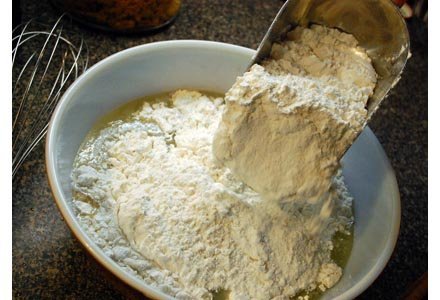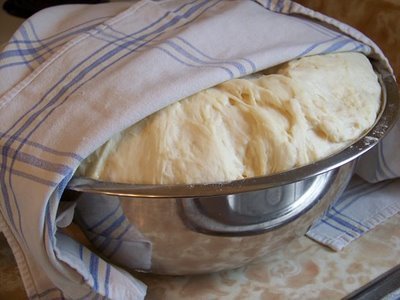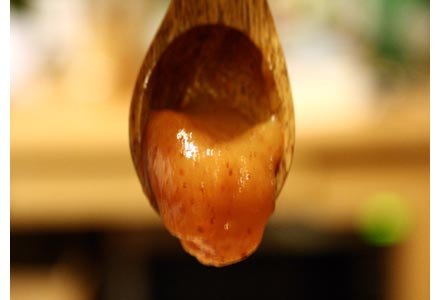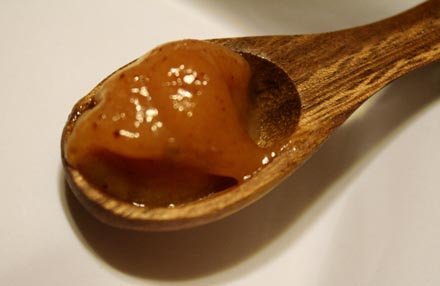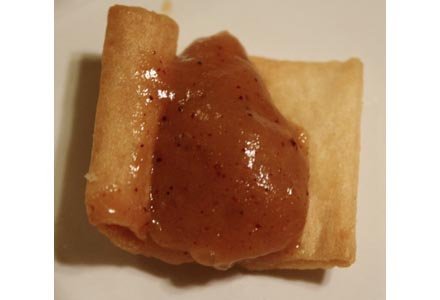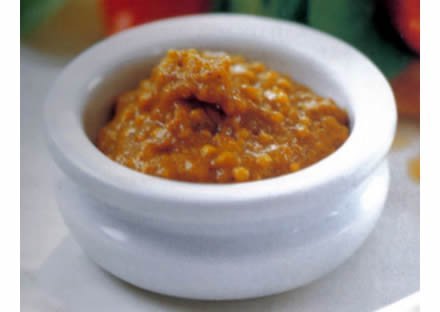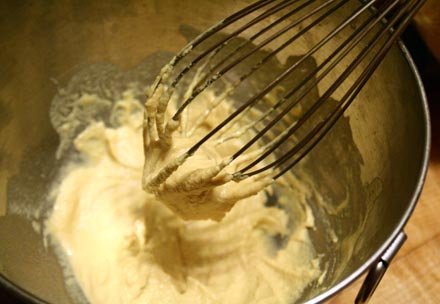Bhutanese Red Rice with Quinoa, Black Beluga Lentils, Harissa and Mint (trust me)
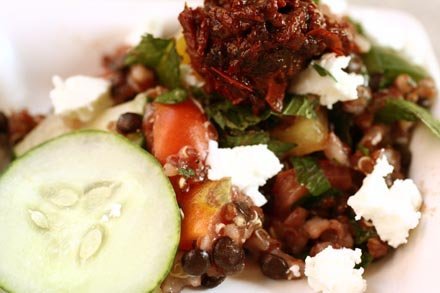
Ink runs from the corners of my mouth,
There is no happiness like mine.
I have been eating poetry
Mark Strand, “Eating Poetry” (1968)
While I was outside shooting up-close photos of my dinner (to the undiminished bemusement of my neighbors, even after all this time), the cat ran off with my cheese. Those who say that animals don’t feel emotions have never seen a cat that has just made off with the lion’s share of the camembert. It was happiness all right, pure and simple. Followed by just enough self-awareness and subsequent guilt (when I came stomping into the room) to keep him alive.
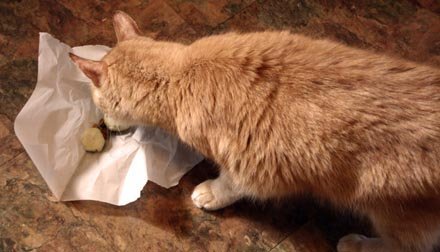

It’s okay though, because before he did that I was having trouble writing about happiness, and yet I must. There doesn’t seem to be any way to write about Bhutan without writing about happiness. And there’s no way to write about Bhutanese red rice without paying homage to the place that it comes from.
Bhutan is a nation of the incredibly poor yet paradoxically and uncommonly rich. Located in South Asia and bordered by the Himalayas, it has been one of the most isolated nations in the world. Until 1999, there was a national ban on television, the Internet and cell phones (I think I want to live there). In the last 10 years Bhutan has acquired some mod cons, but somehow these have not come at the expense of its Gross National Happiness. In 1972 Bhutan’s former King Jigme Singye Wangchuck declared that Gross National Happiness was Bhutan’s national guiding philosophy, granting it precedence over Gross National Product. This was a part of his commitment to build an economy fitted to Bhutan’s unique culture and based upon its spiritual and humanistic values.
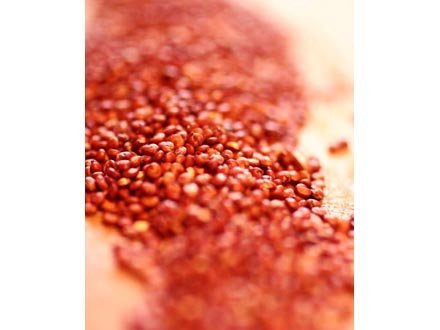
And the result has been a nation that has slowly modernized while still preserving its culture, traditions, identity and natural environment. In a 2005 survey, 45% of Bhutanese reported being very happy, 52% reported being happy and just 3% said they were not happy. This places Bhutan’s happiness level within the top 10% of nations worldwide. But don’t just ask them. In 2006, Business Week magazine rated Bhutan the happiest country in Asia and the eighth-happiest in the world.
I was having trouble writing about happinesss because happiness seemed just too big. I was taking my happiness way too seriously. Then the cat reminded me: happiness is in the smallest things, the moments that bloom and fade around us all day long. I suspect that this is the sort of happiness that Bhutan has put a premium on.
And here’s the truth: for a moment, when I saw Grendel licking the parchment that had once held the precious cheese, my regret slipped away and I felt it too. Happiness is contagious.
It’s also good for you. The BBC just published a study that finds that happy people live longer. Though they called it “optimism”, the state that the article describes is more akin to happiness. It’s possible, after all, to be optimistic while harboring hostile thoughts. But the article describes that warm, grounding, moment to moment sense of connectedness to the present, that flash when self-consciousness fades and we open to receive the energy around us. You know, happiness.
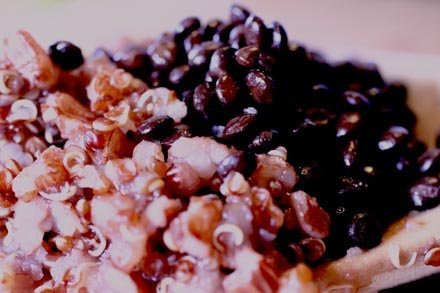
Happiness is what you feel when. When you take a single bite of tangy, unbelievably decadent Nettle Meadow’s Kunik goat cheese, smeared liberally onto a wedge of homemade crusty bread. No, it really, really is. Big happiness. Or when you come inside after mowing the lawn on a staggeringly humid afternoon and bite into a chilled Sungold cherry tomato, snatched hours earlier from your garden. Or when you laugh louder than you know you should, or catch the expression in your young niece’s face when you do. Or better yet, when she doesn’t know anyone is looking. It’s also the look in your fiance’s face when he’s wrestling with a bit of code and has forgotten you’re in the room. It’s the way your muscles are just a step behind your intentions a half hour after a really satisfying workout. It’s taking far more photos than you need to, and sharing all of them, simply because you love the world as it’s magnified and reflected through the lens. It’s a single, perfect line of poetry. It’s finding out what brings happiness to the people that make you happy.
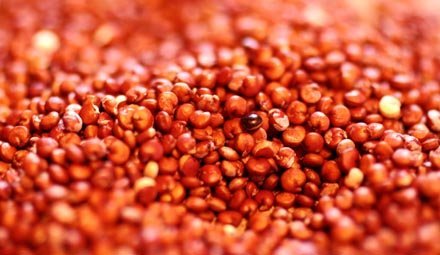
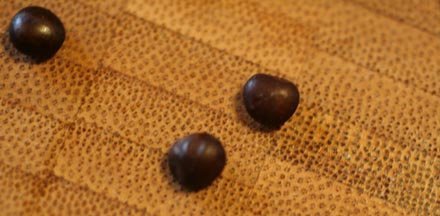
So do something a little bit bad just to know you’re alive. Eat something so spicy it makes you flush like you’ve gotten away with something. Let your child dig into the cake before it cools, give him extra icing. Laugh louder than you know you should, and for goodness sake, run off with the cheese.
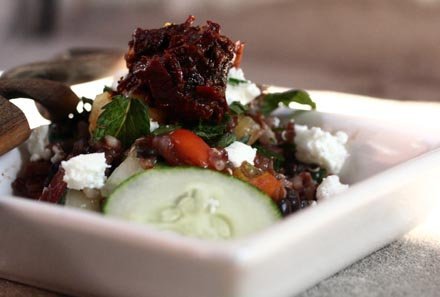
The Recipe:
This may look suspiciously like a previous recipe, but it’s nations apart. It’s true that these days black beluga lentils are making me quite happy, and in the lazy heat of August, so do easy-peasy recipes. But this one has mint, harissa, tomatoes, oh, and Bhutanese red rice and red quinoa.
The harissa adds that je ne sais qua, a burst of warm, smoky flavor that transforms the dish from something familiar to something exotic and wondrous. If you make the harissa yourself, be sure to use a generous amount of smoked chiles in the mix – it adds a three-fold complexity to your dish. The mint pairs beautifully with the harissa and the citrus flavors. So many distinct tastes present themselves here, melding seamlessly into a lively, chewy, meaty, satiating meal.
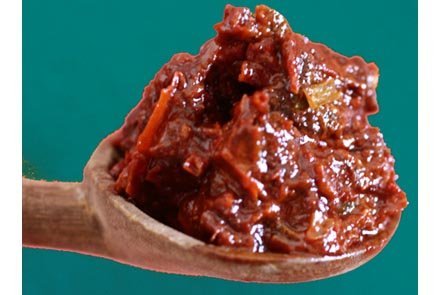
Bhutanese red rice is not a bean, you’re right, but it is an heirloom. Grown at 8,000 feet in the Himalayas, it has a flavor that is both grassy and almond-like, meaty and earthy with a chewy texture. It’s rich enough to stand up to big flavors, and the insistent texture makes it a solid meal base. Nutritionally, it has the same vitamins and minerals as brown rice but cooks in half the time. I find it at Whole Foods and at international grocery stores, but it can also be ordered online.
I also tossed in a bit of red quinoa. The color made me laugh, what can I say? I also love the way that quinoa takes on the appearance of tiny crinoids after it’s cooked. It’ s very nutty and a touch fluffy and with the rice and lentils it forms a complete amino acid chain (in other words, you don’t need meat to get all your protein).
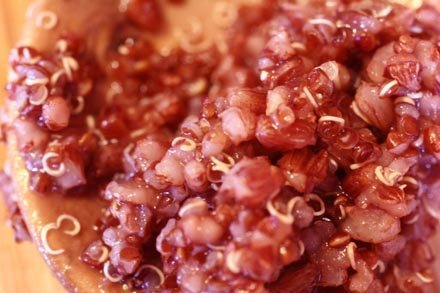
I don’t know what Lucy will advise, but in the name of happiness, for God’s sake, pair this with an extra-dry (not Brut or sec) champagne. Open a bottle just for you, and don’t feel bad about throwing out what you can’t drink in one sitting. Or do what I’ll do – use the rest to make champagne mustard.
Bhutanese Red Rice with Quinoa, Black Beluga Lentils, Harissa and Mint
1 cup cooked black beluga lentils (brown lentils will do too)
2 cups cooked Bhutanese red rice
I cup cooked Incan red quinoa
1 medium cucumber, chopped into small pieces
2 small slicing tomatoes or a generous handful of cherry tomatoes, diced
juice of one lemon, maybe a bit more depending on taste
1 ½ tablespoons olive oil, maybe a bit less depending on taste
1 generous handful of fresh parsley, minced
3 tablespoons fresh mint, minced (peppermint, spearmint, citrus mint all work nicely)
a tablespoon of harissa
1/2 cup good, creamy goat cheese, crumbled
Freshly ground pepper
Combine cooked rice and lentils in a large bowl. Stir in chopped cucumber and tomatoes, then squeeze in the lemon juice and add olive oil. Stir to combine, then add chopped parsley and mint and toss again. Stir in crumbled cheese, then add black pepper to taste. Garnish with hairssa – but be sure to stir it in before chomping down!
